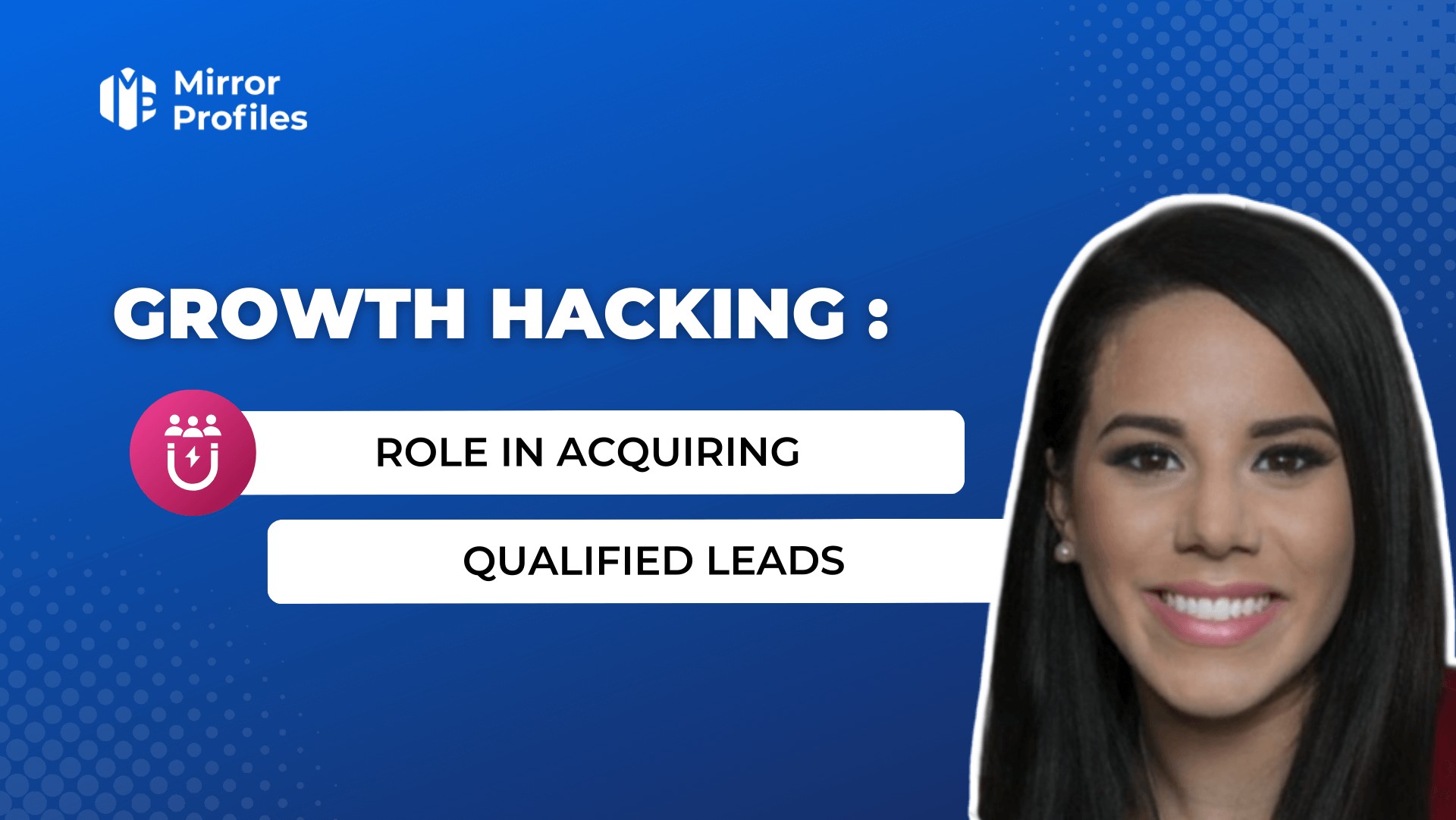Introduction
Growth hacking, a cutting-edge marketing strategy, aims to catalyze growth in a company through inventive, analytical and cost-effective methods and actions, using a variety of tools. Characterized by regular experimentation, continuous product optimization and customer experience, this technique is particularly well-suited to startups. It enables you to quickly attract targeted, quality leads, while keeping your company’s budget in check. But growth hacking isn’t just for start-ups. It is relevant for more established companies wishing to give new impetus to their development in their sector, by attracting new customers through innovative marketing strategies and actions with the judicious use of specific tools.
In this article, we’ll take a closer look at the nature of growth hacking, shedding light on its fundamental marketing principles and ambitions. We’ll be unveiling the most profitable growth hacking actions, applied to lead generation on linkedin or elsewhere, while sharing some of the outstanding success stories inherent in this growth marketing practice. You’ll see how growth hacking can be an essential lever in the development of your business and the success of your marketing objectives.
Understanding Growth Hacking: Foundations and Objectives
Coined by Sean Ellis in 2010, growth hacking refers to an approach in which growth is the only goal. This method goes beyond traditional marketing tactics to integrate a holistic strategy covering product, development, engineering and distribution. The fundamental principles of growth hacking include:
- A core product: It’s essential that the product responds precisely to the needs and expectations of your company’s customers and prospects, providing added value that fosters their loyalty through targeted growth marketing strategies.
- A culture of experimentation: The growth hacker proceeds by trial and error, continually testing hypotheses, measuring results, and refining the most promising growth strategies for the company.
- Innovation and creativity: The search for innovative, cost-effective solutions that can go viral is at the heart of our approach to attracting and retaining corporate users.
- Analysis and data: Growth hackers rely on marketing analysis of data, both quantitative and qualitative, to understand user behavior, identify growth areas and make informed decisions.
The objectives of Growth Hacking
The aim of growth hacking is to perfect the customer experience at every stage: acquisition, activation, loyalty, right through to recommendation of the company, integrating marketing strategies in a coherent way to engage customers and prospects. Growth hackers focus on key performance indicators (KPIs) that reflect the company’s effective growth, such as the number of active users, the conversion rate, the revenue generated per user, or the virality coefficient. They seek to maximize these KPIs by implementing targeted growth hacking strategies for each phase of the customer journey.
Growth Hacking Techniques for Lead Acquisition
Lead acquisition is a crucial growth strategy in growth hacking. This strategy consists in attracting interested prospects to your site or application so that they share their information or sign up for your service, thereby increasing your company’s growth. For example, the MirrorProfiles tool enables our customers to boost their growth by working on Acquisition, Activation and Referral at the same time. In fact, by equipping our acquisition teams with several Linkedin accounts, our customers are able to contact several thousand people per month on Linkedin, thus increasing acquisition. What’s more, the big advantage of Linkedin is that response rates are unrivalled, making it easy to work on your Activation. Last but not least, Linkedin allows you to store your prospects on Linkedin profiles and via Linkedin posts that you can make or follow-up if you work on the “Referral” block.
Let’s explore some tried and tested growth hacking tactics to help your business grow.
Conversion funnel optimization: the Growth approach
Your conversion funnel, a central concept in growth marketing, is the path a potential customer takes from their first click to becoming a loyal customer. It consists of :
- awareness,
- interest,
- desire
- action.
To fine-tune it, you need to identify and eliminate the blockages that cause retention to drop at each phase. Use incentives to encourage prospects to take the next step, with attractive offers, credible testimonials or convincing guarantees. The aim is to increase the conversion rate per stage, and consequently the volume of leads acquired.
Innovation and Continuous Experimentation
At the heart of growth hacking lies constant innovation and experimentation. This means constantly trying out new growth marketing approaches, exploring new channels, testing different messages and formats to seduce and convert your future customers. Relying on data analysis is crucial to confirming or refuting your assumptions, and evaluating the effectiveness of your initiatives vis-à-vis prospects. Be creative and dare to stand out from the crowd, looking for original and cost-effective ways to stand out and encourage word-of-mouth among prospects. The challenge is to identify and fine-tune the growth drivers most relevant to your business.
Automation and scalability
To accelerate your growth, automation and the ability to expand are essential. This means putting in place tools and processes to enable you to manage a mass of leads without compromising quality or speed of response. Recurring tasks, such as sending emails, qualifying leads or tracking prospect conversions, should be automated. In fact, here’s an article that concentrates our advice on the tools
tools you need to deploy
as part of a growth hacking marketing strategy. At the same time, you need an acquisition strategy that evolves with your audience, your market and your product. The ultimate goal is to maximize your return on investment while ensuring constant growth.
Case study : Notable Growth Hacking success stories
Growth hacking transcends the stage of theory to become a vital practice which, combined with astute marketing strategies and the use of relevant tools, has propelled the accelerated success of various businesses. This approach, combined with astute marketing strategies and the right tools, has propelled the accelerated success of various companies by placing customers and prospects at the heart of their growth. Below, we look at some concrete examples of successful growth hacking strategies, and the lessons we can learn from them.
Examples of successful growth hacking strategies
- Airbnb: This company has implemented a growth hacking marketing strategy known as “platform hacking”, which leverages the reputation of another platform. In this case, Airbnb has synchronized its services with Craigslist, a popular classifieds site in the U.S., allowing hosts to easily post their listings on both platforms. This ingenious hook has attracted a myriad of visitors to Airbnb, solidifying it as a robust alternative to Craigslist.
- Spotify: This company used the marketing tactic of “social proof”, demonstrating the relevance of its service through the preferences of other users. Their integration with Facebook, a powerful sharing tool, has opened the door to the automatic broadcast of songs listened to on users’ walls, creating a wave of positive reputation and arousing the natural curiosity of those around them.
- Dropbox: This company saw the benefits of referral marketing by encouraging its users to invite their friends to sign up. The rewards system, an effective motivational tool offering extra storage space for each new registration via invitation, has turned every customer into an active ambassador, generating exponential community expansion.
Lessons learned and best practices
Through these case studies, we can identify lessons and optimal marketing strategies for companies:
- Growth hacking needs to harmonize with the product and the unique value proposition, taking care to promote genuine benefits for users rather than mislead customers.
- The marketing approach must be centered on the user and his or her requirements, offering an enriching and non-intrusive user experience for your prospects.
- It is imperative to rely on meticulous marketing data analysis, to engage in a continuous process of testing to measure the real impact of initiatives, and to refine the most effective marketing strategies.
Conclusion
Growth Hacking is an innovative marketing approach designed to improve business growth through creative, analytical and cost-effective methods. It relies on the strategic use of marketing through the product itself, as well as experimentation, creativity, analysis, optimization, innovation, automation and scalability. Aiming to refine your customers’ and prospects’ journey from acquisition to referral, growth hacking focuses on the key performance indicators that truly represent the company’s growth.
In this article, you’ve discovered what growth hacking is, its principles and marketing objectives, the most effective growth hacking techniques for lead acquisition, and some notable success stories in this field. You’ve also learned how growth hacking can help you grow your business and achieve your goals.
FAQ
What are the 3 pillars of Growth Hacking?
The three fundamental pillars of Growth Hacking are 1. acquisition of new users: This strategy aims to attract a large audience to the company’s website by exploring various effective acquisition channels. 2. Retention of existing users: This involves retaining customers by offering a superior user experience and ensuring that their needs are met on an ongoing basis. 3. Increasing frequency of use: This involves encouraging users to make greater use of the product or service on offer, by offering innovative features, additional incentives and personalized recommendations.
How does Growth Hacking work?
Growth Hacking is a marketing approach aimed at rapidly maximizing a company’s growth through the use of creative and cost-effective methods. This marketing strategy focuses on meticulous data analysis, accelerated experimentation cycles and the development of viral effects to increase user acquisition and retention.
Why become a Growth Hacker?
Opting for a career as a Growth Hacker means getting involved in a fast-growing field that stimulates creativity and encourages innovation. As a Growth Hacker, you’ll apply forward-thinking strategies, use the right tools and run rapid tests to boost business growth. In addition, you’ll develop a range of skills in marketing, data analysis, web development and behavioral psychology.
Who invented Growth Hacking?
The concept of Growth Hacking, focused on significantly accelerating growth at reduced cost, is particularly well suited to the world of start-ups. Coined in 2010 by American entrepreneur and investor Sean Ellis, also founder of GrowthHackers, the term Growth Hacking has rapidly gained popularity in the world of digital business.





